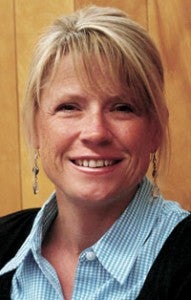Kids’ questions have grown-up answers
Published 8:55 am Friday, December 7, 2012
Column: Amy Pleimling, Dietitian Speaks
As some of you may have seen in the Tribune, I developed a nutrition program for all fifth-graders in our district public schools. I very much enjoying teaching nutrition to this age group (10- and 11-year-olds). They are very receptive to the information and get excited about the topic.
In many of the classroom visits, the kids have nutrition questions for me. Because the kids need to stick to their school schedule and move to their next classes, I often haven’t had time to answer their questions. I encouraged the kids to send me questions through their teachers via email and many of them have done just that.
Their questions are so intelligent I soon realized that any age might be able to benefit from hearing my answers. Today I will share two Halverson students’ questions and my answers. You can easily see the interest these kids have in nutrition by their intelligent questions. Enjoy!
Here is a question from Emily Martinez, Halverson Elementary School fifth-grader:
“Dear Amy, I have wanted to know about the food pyramid. Will you help me?”
Emily,
Great question! The food pyramid was the guide to Americans for healthy eating. This guide is still very helpful and has great messages. However, the MyPlate is the now the new federal guide for us about eating. The Food Guide Pyramid and MyPlate have similarities and differences. The pyramid and the plate are the same in the following ways:
• They both show us that food is separated into groups, and these groups are represented by a designated color.
• Foods that are not shown are not likely healthy (everyday) choices.
• They both address healthy portion size.
The pyramid is different from the plate:
• It was shaped in a triangle so each group was also a triangle. This was significant to show you that the bottom of each triangle was the more healthy (everyday foods) we should eat in that group and that the tops (or smaller part) of each group were the foods we should eat less. For example in the grain group, whole grains were at the bottom (wide part) and sugared cereal at the top (narrow part).
• Both the plate and pyramid address portion size, but the pyramid went into more detail on how many servings from each food group we should have every day.
• The pyramid included oils in the picture and the plate does not.
Both the pyramid and the plate are great tools we can learn from. It is MyPlate that you will continue to see, so I have moved most of my teaching away from the pyramid and to MyPlate.
Here is a question from Savanna Villerreal, Halverson fifth-grader:
“Dear Amy, can kids have heart attacks or does it just happen to older people?”
Dear Savanna,
I am a dietitian and not a doctor, but I will answer your question to the best of my ability. Heart attacks in kids are very rare. If they happen, it is usually related to a heart problem that someone would have already known about or been born with. Heart attacks can happen because of blockage in the blood system — our arteries. Picture a drain that is clogged. Blockage in our arteries mainly happens over a long period of time. Here are two examples for you:
1. A person who eats a poor diet that is high in fat for many years could end up with “clogged arteries.”
2. A person who has high blood pressure over many years can end up with heart problems.
Both these examples would put someone at a higher risk for a heart attack. You may have noticed that the two examples had the words “over time.” This is why it is mainly adults who have heart attacks; the blockage or “clogs” in our arteries develops over years of time. As we discussed in class and all your classmates agreed, it is far better to develop healthy eating habits now than it is try to change your diet after heart problems have already developed.
Keep up the healthy eating!
Amy Pleimling is the dietitian for the Hy-Vee grocery store in Albert Lea.


